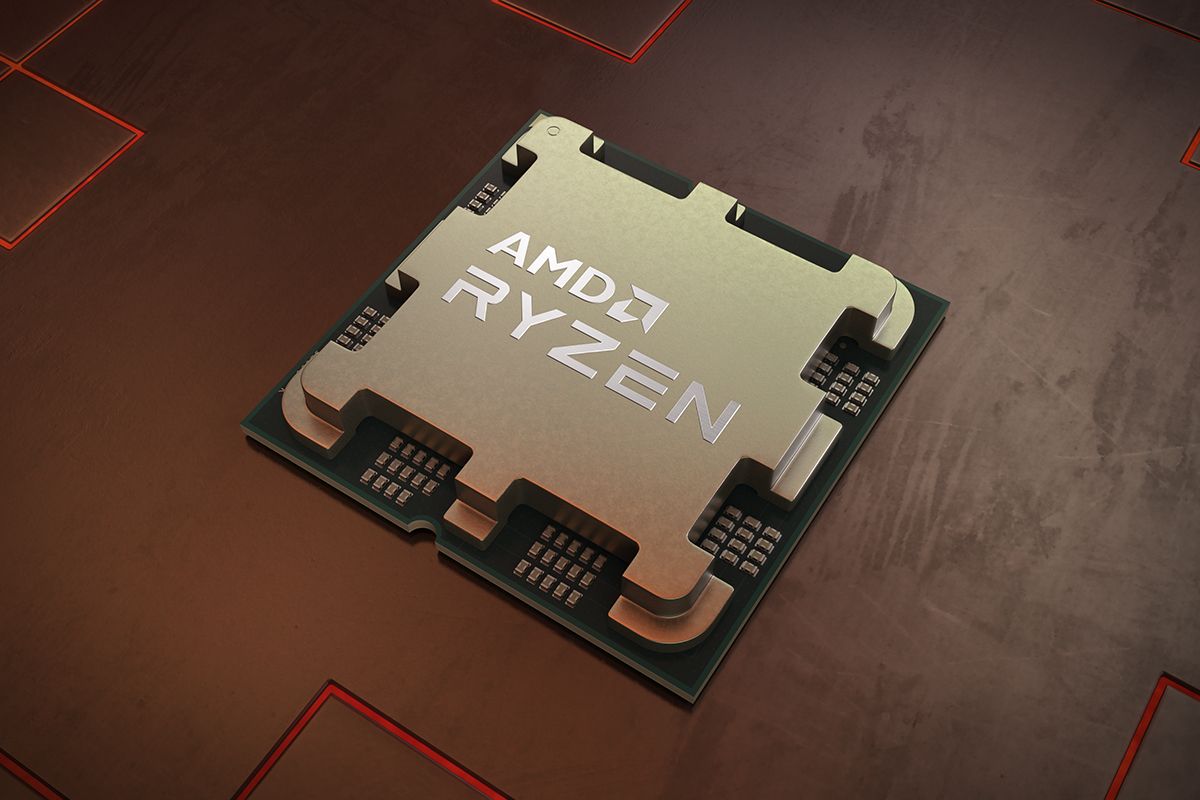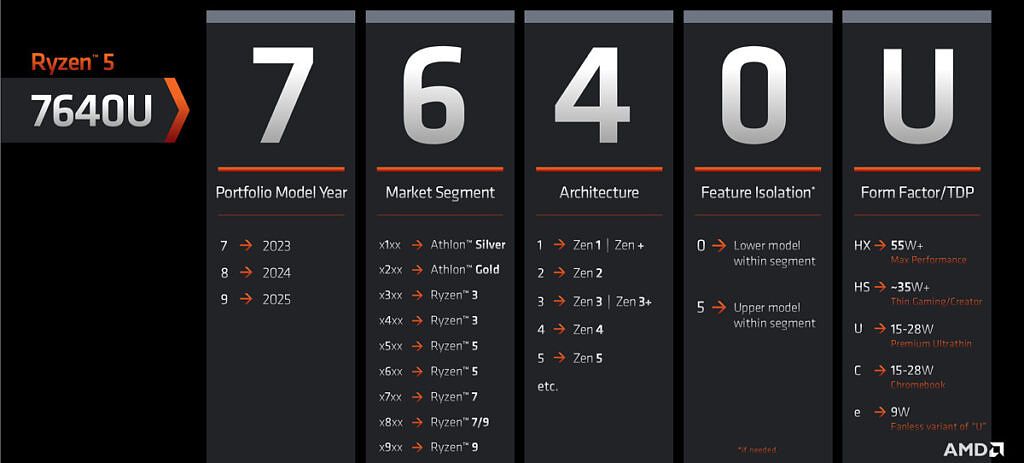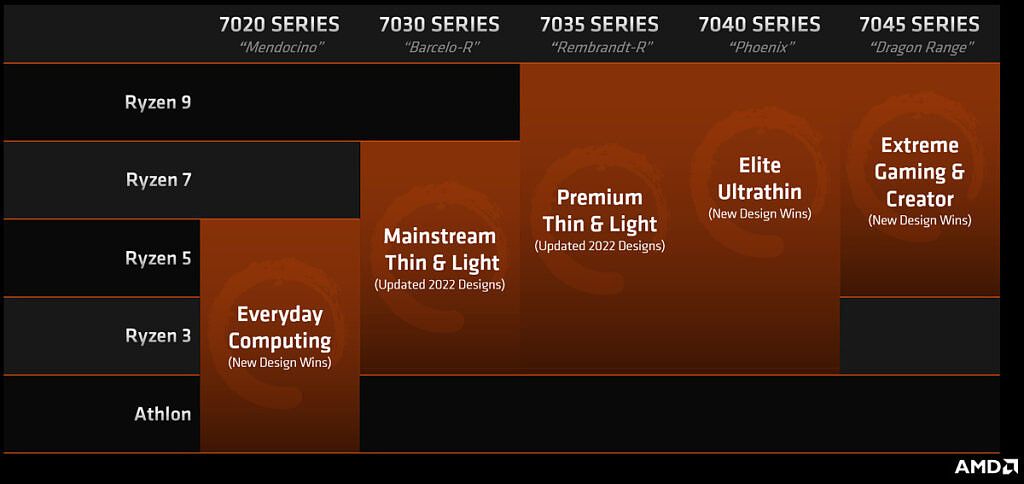Last year when AMD announced its Ryzen 6000 laptop processors, it introduced a few new Ryzen 5000 chips as well. Today, the company announced a whole new naming scheme, so you can be sure that that won't ever happen again. Ultimately, it's going to make it just a bit harder to tell when a newer chip is using an older architecture.
Historically, both AMD and Intel have followed similar naming schemes for their processors. This made it easy to identify and compare them. It's surely not a coincidence that both companies use 3, 5, and 7 as their three tiers, and then have a 9 for more powerful components. And for both companies, the U-series is for convertibles and ultrabooks, while the H-series is for more powerful products like gaming laptops and mobile workstations.
Whether it's a Ryzen 7 or a Core i7, there's a four-digit number that follows, and then there's a letter (like U or H). The first digit of that number (now the first two digits, in Intel's case) has always stood for the generation, and that's the first thing that's changing for AMD.
That first digit now stands for the year, so any Ryzen 7000 processor just means that it's part of the 2023 lineup, not that it's Zen 4. AMD had already announced new 'Mendocino' processors coming this year, which are made for $399-$699 laptops and are built on the Zen 2 architecture; those will be part of the Ryzen 7000 family as well.
The second digit doesn't change. It's still for differentiating between different products with the same name, so if there are two U-series Ryzen 5 SKUs, this is where you'll see which one is better.
The third digit is the architecture. This is something that we really haven't seen before. In the past, you'd see a Ryzen 7 5800U and a Ryzen 7 5850U, and that change in the third digit was just for the Ryzen PRO model. Now, it's going to indicate Zen 1 through Zen 5 and beyond. Those Mendocino processors would have a 2 in that spot, while newer Zen 4 processors would have a 4. Finally, the fourth digit can be a 0 or a 5 just to differentiate between variants, so this would be used for something like Zen 3 and Zen 3+.
The suffix on the end remains pretty much the same. There's a 15-28W U-series, or it can be called C-series if it's meant to be a Chromebook chip. Then, there are HS and HX chips for more powerful hardware. There's also an 'e' varient for fanless devices, something we haven't seen much of from AMD.
AMD also broke down what we're going to see from each of the variants. As you can see, the Zen 2 Mendocino processors are for mainstream products that are considered new designs. Existing designs that are getting refreshed will get Zen 3 and Zen 3+ chips with the codename Barcelo-R and Rembrandt-R. For actual Zen 4 processors, those are considered 'Elite Ultrathin', and they'll be new designs. Fially, powerful Dragon Range processors are for gaming and creators.
AMD recently announced its Ryzen 7000 desktop processors, and those follow the naming scheme that we're all used to. Of course, today's announcement was geared toward new Ryzen 7000 mobile processors, which we'll likely hear more about at CES.
Source: AMD



